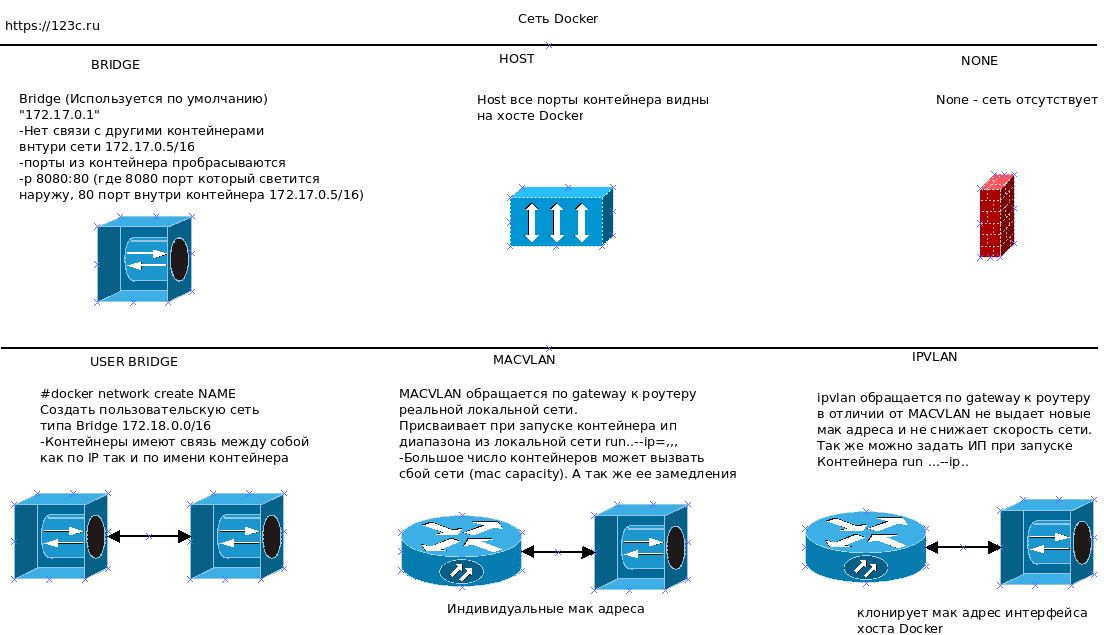Overview of Docker Networks

Main Commands for Working with Networks
- network ls — list all networks
- docker network rm $(docker network ls -q) — remove all networks
- docker network inspect bridge — inspect the bridge network
- docker network create — create a network (default type is bridge)
- docker network connect NETWORK CONTAINER — connect a network to a container
- docker network disconnect NETWORK CONTAINER — disconnect a network from a container
- docker network inspect x6d9725041b2 | NetworkID:"sdfsdfsfsdfsFDFFDFgb" — view network ID
Working with Ports
- -p Host port:Container port
- -p 9980:9980 — open a port
- -p 9980:9980 -p 1111:1111 — open two ports
- -p 0.0.0.0:9980:9980 — open a port only for IPv4
- -p 127.0.0.1:9980:9980 — access only from the host computer
Configuring IPv6
Create a file /etc/docker/daemon.json with the following content:
{ "ipv6": true, "fixed-cidr-v6": "2001:db8:1::/64" }
When creating a network, use the parameter --ipv6.
Network Types and Their Configuration
Creating a MACVLAN Network
- Enable promisc mode:
sudo ip link set eth0 promisc on - In VirtualBox, enable Promiscuous Mode: Allow All
- Example command:
docker network create -d macvlan --subnet=192.168.10.0/24 --gateway=192.168.10.1 -o parent=eth0
Creating an IPVLAN Network
- Clones the MAC address of the host interface
- Example command:
docker network create -d ipvlan --subnet=192.168.0.0/24 --gateway=192.168.0.1
Running a Container with a Specific Network
Example command:
docker run --network=ipvlan1 --ip=192.168.10.100 --name CONTAINER1 CONTAINERIMG